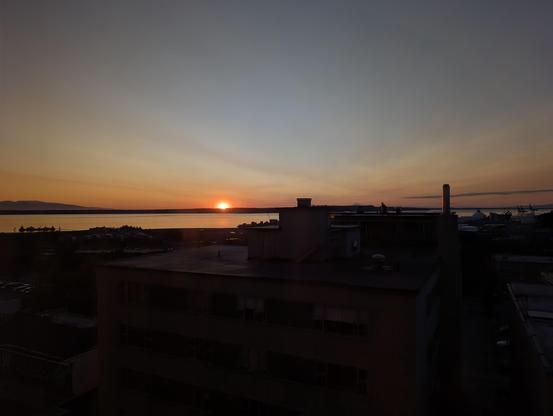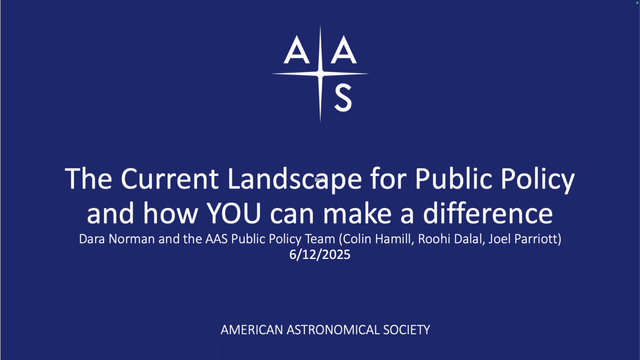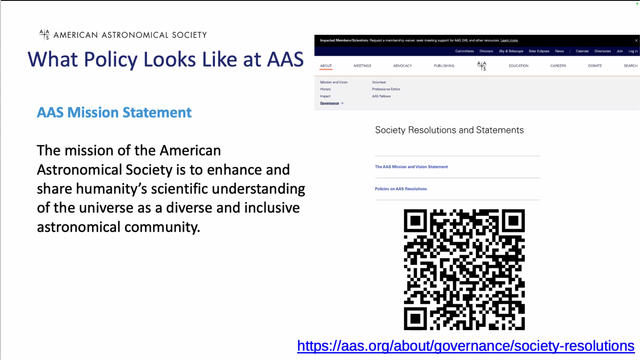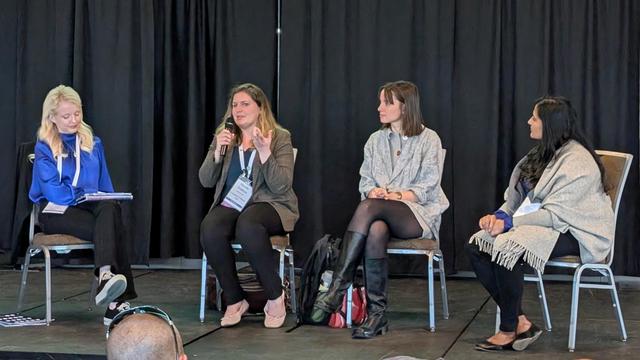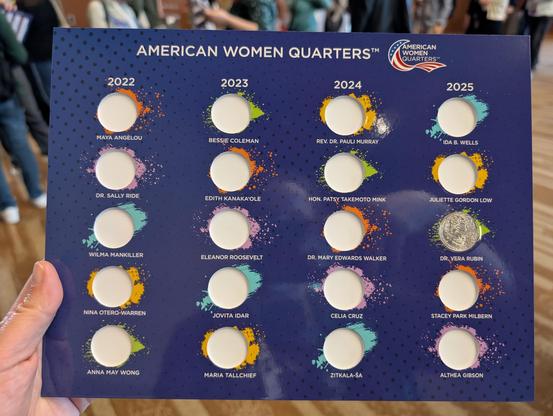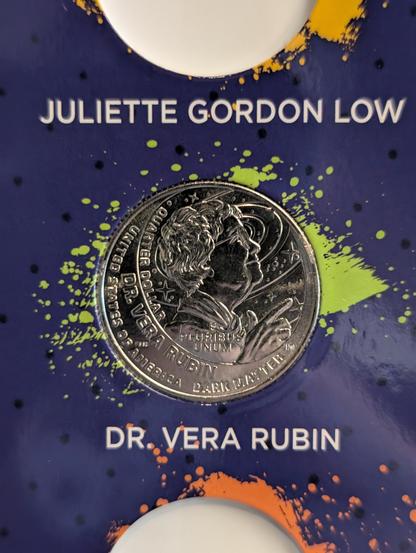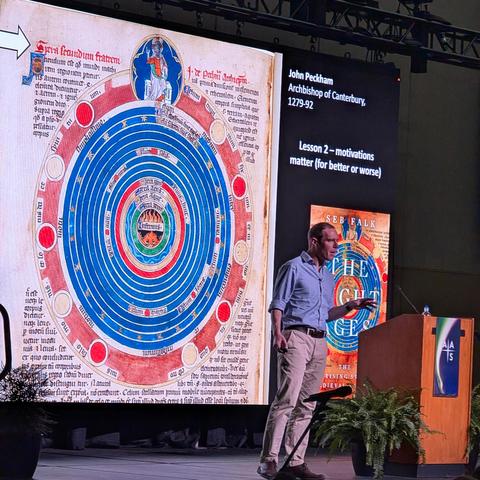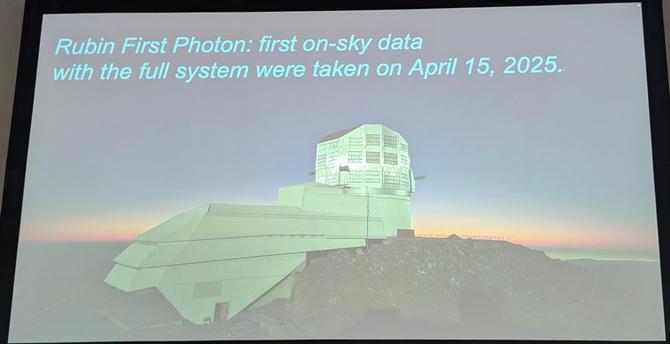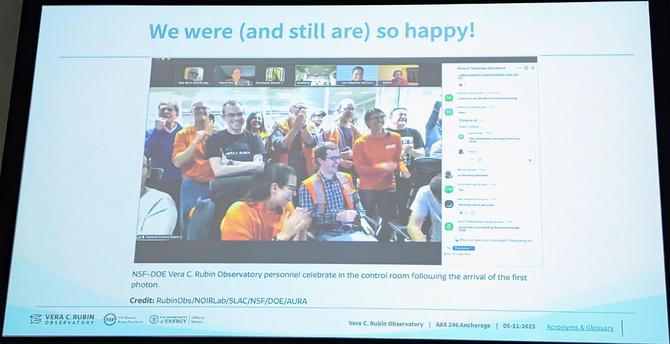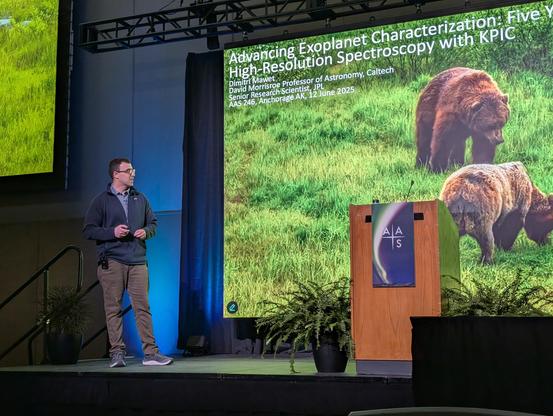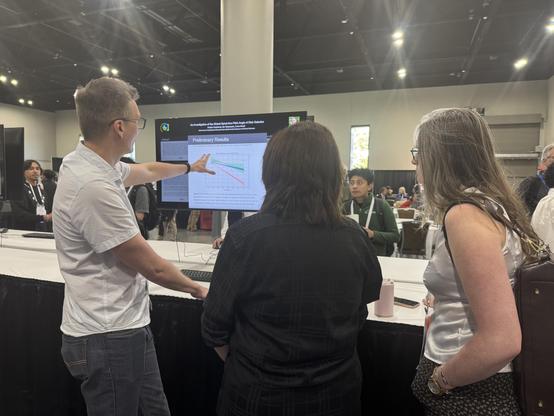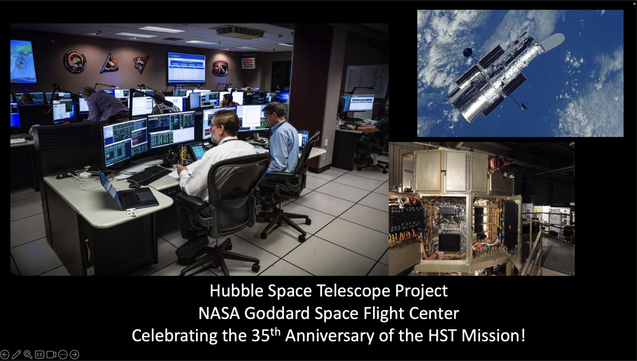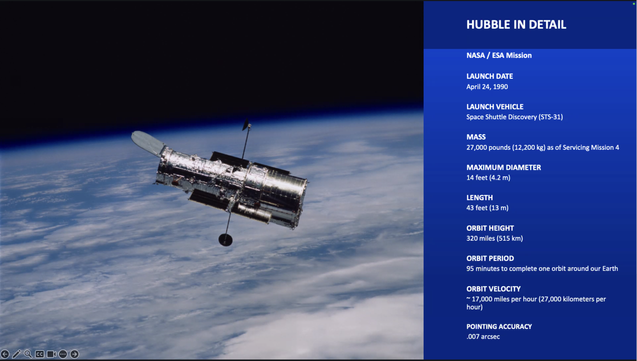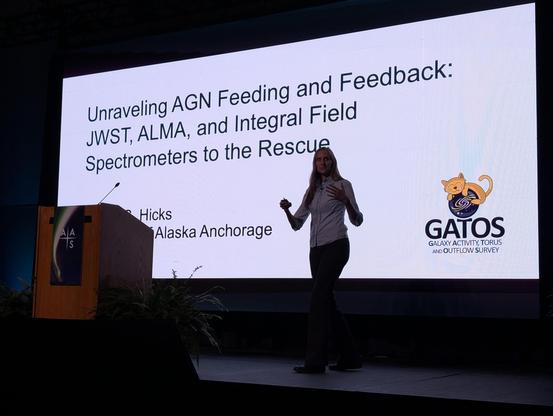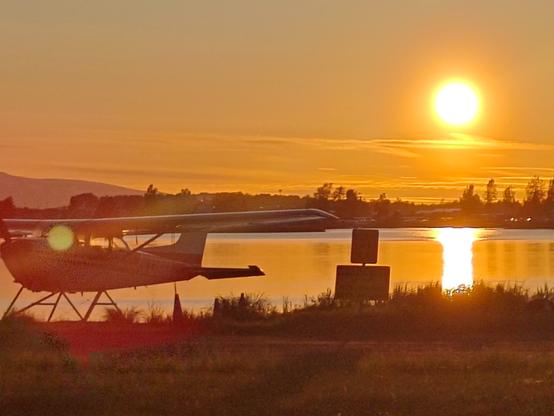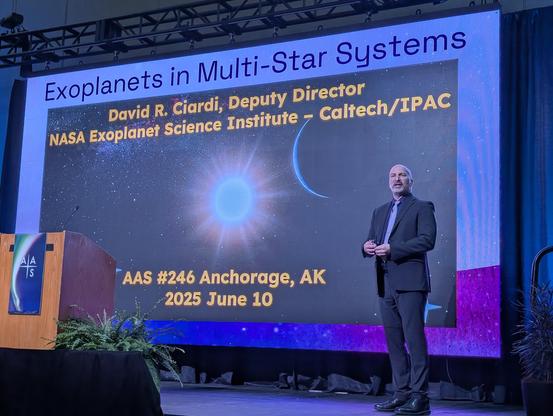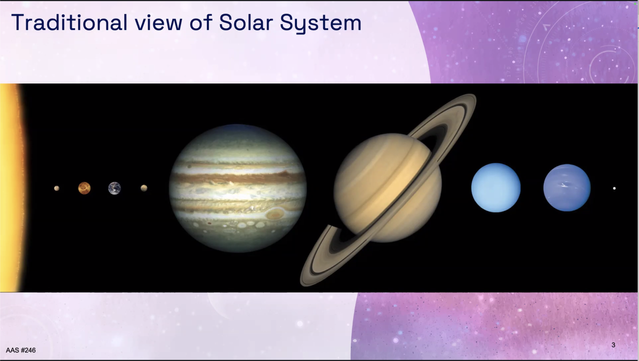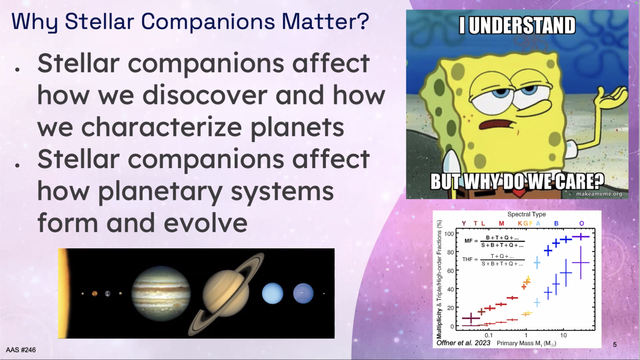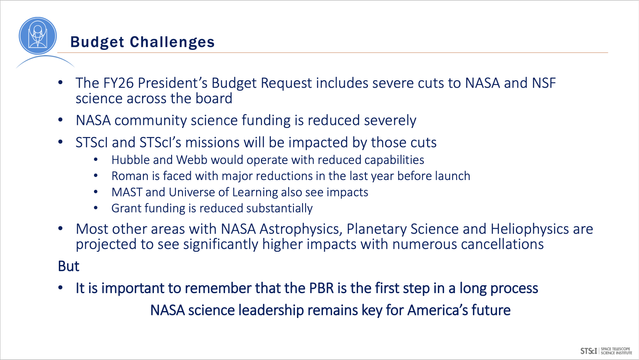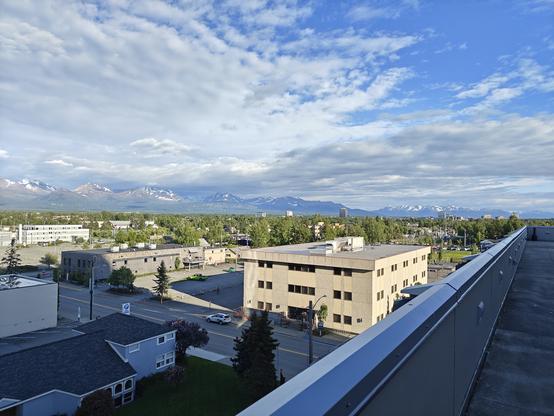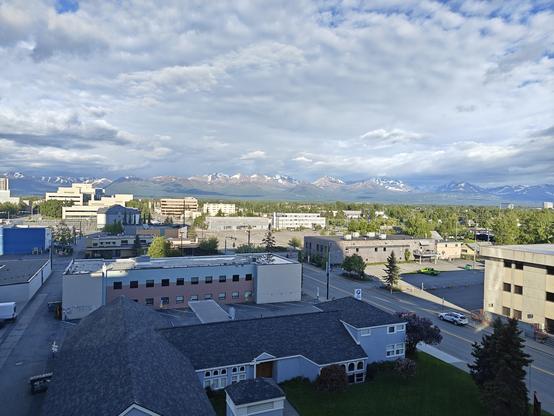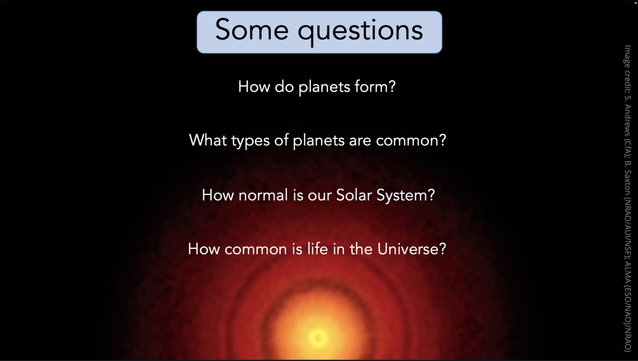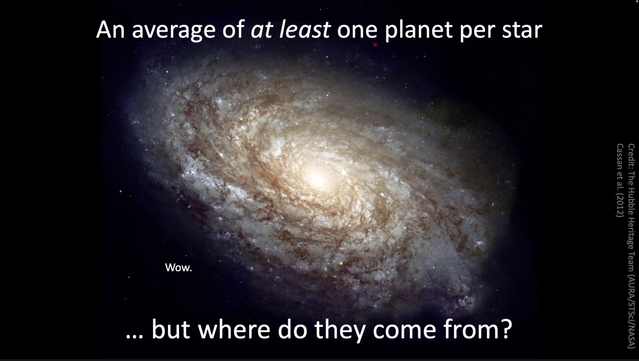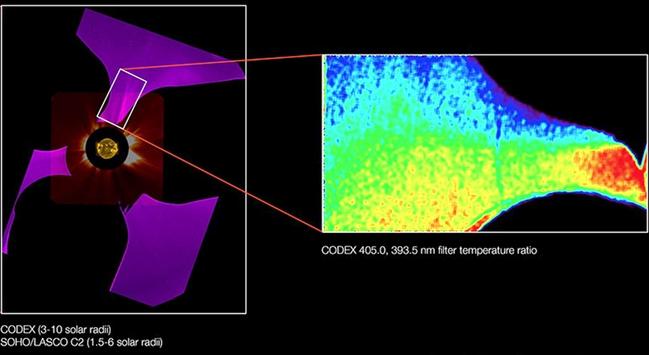And that was it for #AAS246. I'll leave you with the final sunset from my hotel room taken at 11:30pm.
#AAS246
And we'll wrap up my #AAS246 posts with the only plenary I got to on day 4: Public Policy Plenary: The Current Landscape for Science Policy and How YOU Can Make a Difference.
I have to be a little careful here because of my job, but I will recap what I can of what AAS leadership presented.
Last thing for day 3 of #AAS246:
A panel discussion on the legacy of astronomer Vera Rubin, namesake of the soon-to-be-operational Rubin Observatory. And we were some of the first people to get our hands on the new Vera Rubin quarter, courtesy of the US Mint.
And the final plenary lecture of #AAS246 day 3: Things in Disks: Towards a New Understanding of Galactic Nuclei by K.E. Saavik Ford.
Needed some sleep. Now I'm going to finish the AAS 246 recaps for real.
Next up on day 3 of #AAS246 a bit of history. The Osterbrock Book Prize Lecture: Where Are We? How Past Astronomers Found Their Place in the Universe — and on Earth by Seb Falk.
In the past, people across the world practiced naked-eye astronomy to make predictions, to tell time, and to navigate the seas.
Back after a bit of a break exploring Anchorage. The conference is over, but now I have time to finish up my #AAS246 summaries.
Next on day 3 was the Rubin Observatory Town Hall.
Rubin is almost ready for science! They collected their first photons on April 15 and there was much rejoicing.
Next plenary at #AAS246: Advancing Exoplanet Characterization: Five Years of High-Resolution Spectroscopy with KPIC by Dimitri Mawet.
Mawet included two bears on this title side, the big guy is JWST, little guy is ground-based observatories. They are friends, but this talk was JWST free zone.
I had some good discussions with folks about the galaxy research my collaborators and I are working on at the North Carolina Museum of Natural Sciences. #aas246
First plenary of day 3 of #AAS246 - The Hubble Space Telescope at 35: Eyeing the Future by Jennifer Wiseman.
Hubble just celebrated its 35th birthday. For many astronomers in the audience, Hubble has been around longer than they have. [Not me though, it launched when I was 5, it was an important part of my childhood].
With the 5th #AAS246 presser come the paper https://arxiv.org/abs/2506.07262 (ALMA-JELLY I: High Resolution CO(2-1) Observations of Ongoing Ram Pressure Stripping in NGC 4858 Reveal Asymmetrical Gas Tail Formation and Fallback), the press release https://news.arizona.edu/news/belly-beast-massive-clumps-reveal-star-factories-bygone-era-cosmos (In the belly of the beast: massive clumps reveal star factories from a bygone era of the cosmos) and the papers https://iopscience.iop.org/article/10.3847/1538-4357/ada8a6 (UNCOVERing the Faint End of the z ∼ 7 [O iii] Luminosity Function with JWST's F410M Medium Bandpass Filter) with the press release https://science.nasa.gov/missions/webb/nasas-webb-uncovers-galaxy-population-driving-cosmic-renovation/ and https://arxiv.org/abs/2505.06198 (The "Dark-Matter Dominated" Galaxy Segue 1 Modeled with a Black Hole and no Dark Halo) with the press release https://www.utsa.edu/today/2025/06/story/researchers-offer-alternative-to-dark-matter-model.html
And here is (a recording of) the fifth and final #AAS246 press conference about "Recent and Upcoming Discoveries in the Broader Universe": https://www.youtube.com/watch?v=nf9X5kntlYc - topics at https://aas.org/meetings/aas246/press-kit#Wed_am
Final plenary of day 2 of #AAS246: Unraveling AGN Feeding and Feedback: JWST, ALMA, and Integral Field Spectrometers to the Rescue by Erin Hicks.
All massive galaxies have supermassive black holes. Some have active galactic nuclei, actively accreting supermassive black holes. Supermassive black holes and galaxies seem to evolve together, which is a little odd, considering how small black holes are on galactic scales.
Also, if you're wondering what the results are from #AAS246, it turns out the Sun does set in Anchorage near the solstice. It happens very late, but it's worth it!
And if you were wondering, yes the Sun does set here at #AAS246 in Anchorage. It happens late, but it's worth it!
Next Plenary at #AAS246: Exoplanets in Multi-Star Systems by David Ciardi
While we may have a view of what the typical planetary system looks like based on our solar system, that might not be the case. On average, every star has one planet. Also, on average, most stars have stellar companions. So, planets in multi-star systems are common, probably about ~50% of all planets.
The STScI Town Hall at #AAS246.
First off was Neill Reid, Multi-Mission Project Scientist with some general updates.
There are significant budget challenges with the President's Budget Request that will affect Hubble, JWST, and Roman and hurt NASA community science.
All of the slides are available here:
https://outerspace.stsci.edu/display/AAS/STScI+Town+Hall+-+June+2025%2C+AAS+246
To those of you who are missing the view of our first sunny day at #aas246, I present to you the following:
Next Plenary at #AAS246: The Missing Link: Planet Formation from Millions to Billions of Years by Meredith Hughes
There is an average of one planet around every star in the Milky Way. Where do those planets come from? How do they form? To help answer these questions, we can study debris disks around other stars.
With the 4th #AAS246 press conference come the press releases https://science.nasa.gov/blogs/punch/2025/06/10/nasas-punch-releases-its-first-images-of-huge-eruptions-from-sun/ and https://www.swri.org/newsroom/press-releases/swri-led-punch-mission-images-huge-solar-eruption about #PUNCH and https://science.nasa.gov/image-article/nasas-codex-captures-unique-views-of-suns-outer-atmosphere/ about #CODEX sitting on the ISS. While the corona shape predictions for the 2024 total solar eclipse were published in https://www.predsci.com/corona/apr2024eclipse/home.php
The PI of #PUNCH and a composite image from the images by the five satellites, during the ongoing #AAS246 press conference: the stitching already works quite well and will improve further, but already now halo CMEs can be followed to a larger angular size than ever before and until hours before Earth impact.
